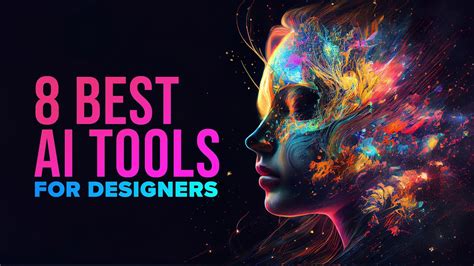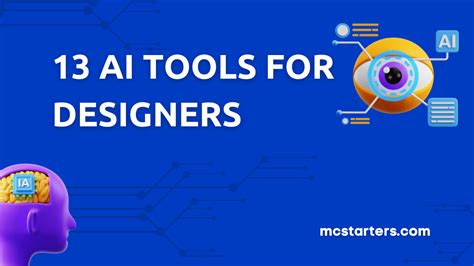Choosing the right graphic art software is crucial for creative professionals who seek powerful tools to bring their visions to life. With countless options available, finding software that is both safe and easy to download can be overwhelming. This guide explores the top 10 graphic art software programs, carefully selected based on their performance, user support, security, and more. Whether you’re a seasoned artist or just starting, this article provides an in-depth review of each software, ensuring that you can make an informed decision. Plus, we’ll guide you through the safe download and installation process, offering links to verified sources for a secure experience.
Delve into this topic with zokablog.com to gain a thorough understanding.
1. Criteria for Selection
When selecting the top graphic art software, several key criteria were considered to ensure that the programs meet the needs of creative professionals while maintaining safety and ease of use. First, performance and stability were prioritized, as these aspects are essential for handling complex projects without crashes or slowdowns. Security measures were also critical, ensuring that each software comes from a reputable source and provides secure download options to protect against malware or other threats.
User support and community engagement were evaluated to ensure that users have access to help and resources when needed. Integration capabilities with other tools and platforms were considered, allowing for seamless workflows. Customization and flexibility were also key, as artists often require the ability to tailor software to their specific needs. Accessibility features, such as user-friendly interfaces and options for those with disabilities, were taken into account. Finally, the download and installation process was assessed for its simplicity and transparency, ensuring that even less tech-savvy users can get started without hassle. These criteria collectively ensure a balanced selection of top-tier graphic art software.

2. Detailed Review of Each Software
In this section, we provide a comprehensive review of each of the top 10 graphic art software programs. Each software is evaluated based on its unique features, usability, and overall performance. We examine key aspects such as the range of tools and functions available, ease of use for both beginners and professionals, and the quality of output it delivers. The reviews also cover system compatibility, highlighting how well each software integrates with various operating systems and other design tools. Additionally, we assess the customization options, allowing users to tailor the software to their specific needs. By focusing on these factors, we aim to provide a clear and detailed understanding of how each software stands out, helping users make an informed choice based on their individual requirements and preferences.

3. System Requirements
Understanding the system requirements for each graphic art software is crucial to ensure optimal performance and compatibility with your hardware. In this section, we detail the specific requirements for each of the top 10 graphic art software programs. We provide information on the minimum and recommended hardware specifications, including processor speed, RAM, and graphics card capabilities. Additionally, we cover the supported operating systems, whether Windows, macOS, or Linux, and any version-specific requirements.
We also address the software’s compatibility with different hardware configurations, such as tablets or high-resolution monitors, which can significantly impact the user experience. For users with older systems or less powerful hardware, we include recommendations on possible upgrades or alternative software that might be a better fit. Ensuring that your system meets or exceeds these requirements will help in avoiding performance issues and maximizing the efficiency of your graphic design tasks. This comprehensive overview helps users make informed decisions about software selection based on their existing hardware setup.

4. User Support and Community
Effective user support and an active community are essential for maximizing the benefits of graphic art software. In this section, we evaluate the support options and community engagement for each of the top 10 software programs. We examine the availability and quality of official support channels, including customer service, technical support, and comprehensive help documentation. Features such as live chat, email support, and phone assistance are considered to determine how well users can get help when encountering issues or needing guidance.
Additionally, we assess the strength and activity of the user community associated with each software. An active community often provides valuable resources, such as forums, user groups, and online tutorials, where users can share tips, solve problems, and collaborate. We look at the presence of official user forums, social media groups, and third-party websites that offer additional support and insights.
The depth of user-generated content, such as tutorials and plugins, is also considered, as it can enhance the functionality and user experience. By evaluating these factors, we provide a clear picture of how well each software supports its users through direct assistance and community engagement, ensuring that users have the resources they need to make the most of their graphic art tools.
5. Security Measures
Security measures are crucial when selecting graphic art software to protect your computer and data from potential threats. In this section, we review the security features of each of the top 10 software programs, focusing on how they safeguard against malware, viruses, and other security risks. We examine whether the software is regularly updated with security patches and how it handles data encryption and user privacy.
We also consider the reputation of the software developers and their commitment to maintaining robust security practices. Additionally, we assess the safety of the download process, ensuring that each software is available from trusted sources and has undergone thorough vetting to prevent malicious software from being distributed.
By highlighting these security measures, we aim to provide users with confidence in their software choices, ensuring that they can create art without compromising their system’s integrity or personal information.
6. Integration Capabilities
Integration capabilities are a key factor in selecting graphic art software, as they determine how well the software works with other tools and platforms in your creative workflow. In this section, we explore the integration options for each of the top 10 graphic art software programs, focusing on their compatibility with other design tools, file formats, and creative suites.
We examine whether the software supports seamless integration with popular applications such as Adobe Creative Suite, CorelDRAW, or Autodesk products. Additionally, we look at how well the software handles various file formats, including PSD, AI, SVG, and others, to ensure smooth transitions between different tools. Integration with cloud storage services like Dropbox, Google Drive, or Adobe Creative Cloud is also considered, as it allows for easy access and sharing of files across devices.
Furthermore, we assess the software’s ability to connect with third-party plugins and extensions that can enhance functionality and streamline workflows. By evaluating these integration capabilities, we provide insight into how well each software fits into a broader creative ecosystem, helping users to optimize their design processes and maintain efficiency.
7. Performance and Stability
Performance and stability are critical factors in determining the effectiveness of graphic art software. In this section, we assess how each of the top 10 software programs performs under various conditions and their overall reliability.
We begin by evaluating the software’s speed and responsiveness during typical tasks, such as rendering complex graphics, applying filters, and managing large files. We test the software’s ability to handle high-resolution images and multi-layered compositions without significant lag or slowdowns.
Stability is also a key focus, with a look at how often the software experiences crashes, freezes, or other performance issues. We review user feedback and any reported bugs or glitches to gauge how stable the software is in real-world usage.
Additionally, we consider the software’s resource usage, including CPU and memory consumption, to ensure it runs efficiently without taxing your system excessively. By analyzing these performance and stability aspects, we provide a comprehensive view of how each software stands up to demanding design tasks, ensuring a smooth and productive creative experience.
8. Customization and Flexibility
Customization and flexibility are essential for graphic art software, allowing users to tailor their tools to specific needs and workflows. In this section, we review how each of the top 10 graphic art software programs accommodates user preferences and offers customization options.
We examine the extent to which the software allows users to modify the interface, such as adjusting toolbars, menus, and workspace layouts to fit personal workflows. We also assess the availability of customizable brushes, palettes, and shortcuts that enable a more personalized and efficient creative process.
Additionally, we look at the software’s support for plugins and extensions, which can enhance functionality and add new features. Flexibility in handling various design styles and techniques is also considered, ensuring that the software adapts to a wide range of creative approaches. By evaluating these aspects, we highlight how well each software adapts to individual preferences and creative needs.
9. Accessibility
Accessibility is a crucial factor in ensuring that graphic art software is usable by a diverse range of users, including those with disabilities. In this section, we evaluate how each of the top 10 graphic art software programs addresses accessibility features and user-friendly design.
We begin by examining the availability of accessibility options such as screen reader compatibility, keyboard shortcuts, and high-contrast mode to aid users with visual impairments. We also look into how the software supports alternative input devices like graphic tablets and voice commands, which can enhance usability for individuals with physical disabilities.
The software’s interface design is assessed for ease of navigation and intuitive layout, making it more approachable for all users. We review whether the software provides customizable interface elements to accommodate different needs and preferences.
Additionally, we consider the availability of tutorials and help resources specifically designed for users with accessibility needs. By evaluating these accessibility features, we provide insight into how each software ensures an inclusive and supportive environment for all creative professionals.
10. Download and Installation Process
The download and installation process is a vital aspect of using graphic art software, affecting how quickly and smoothly users can start their creative projects. In this section, we detail the steps involved in acquiring and setting up each of the top 10 graphic art software programs.
We begin by describing the download procedure, including the availability of direct downloads from official websites or trusted sources, and whether the software is offered through app stores or third-party platforms. We assess the clarity and simplicity of the download process, noting any potential issues such as lengthy download times or confusing instructions.
The installation process is then reviewed for ease of use, including the setup wizard’s guidance and any additional configuration steps required. We evaluate whether the installation process is straightforward or if it includes unnecessary complications, such as excessive bloatware or complex settings.
We also consider the availability of installation options, such as portable versions or cloud-based installations, which can offer additional flexibility. By examining these factors, we ensure that users can efficiently download and install their chosen graphic art software with minimal hassle.
11. Trial Versions and Refund Policies
Trial versions and refund policies play a crucial role in helping users evaluate graphic art software before committing to a purchase. In this section, we review the availability and features of trial versions for each of the top 10 software programs, including the duration of the trial period and the limitations imposed, such as watermarks or restricted functionality.
We also examine the process for accessing trial versions, noting whether they are easy to obtain from the official website or require a registration or email sign-up.
Additionally, we explore the refund policies offered by each software provider. This includes the conditions under which refunds are granted, such as a satisfaction guarantee or a specified time frame for requesting a refund. We assess the clarity of the refund process and any associated fees or restrictions.
By providing this information, we ensure users can make an informed decision about their software choice, with the confidence that they can try before they buy and have recourse if the software does not me
12. Comparison with Industry Standards
Comparing graphic art software to industry standards is essential for evaluating its effectiveness and relevance in the competitive landscape. In this section, we benchmark each of the top 10 software programs against established industry standards for graphic design tools.
We assess how each software measures up in terms of features, performance, and overall quality compared to leading industry benchmarks. This includes evaluating whether the software meets or exceeds the functionality offered by top-tier programs in areas such as toolset comprehensiveness, user interface design, and creative capabilities.
We also consider how well each software aligns with current industry trends and innovations, such as support for high-resolution displays, integration with emerging technologies, and compatibility with modern design workflows.
By comparing these software programs to industry standards, we provide insights into their competitiveness and value, helping users understand where each option stands in relation to the best available tools in the graphic art sector.
13. Best Use Cases
Understanding the best use cases for each graphic art software helps users select the tool that best fits their specific needs and creative goals. In this section, we explore the ideal scenarios and types of projects where each of the top 10 software programs excels.
We detail how each software performs in different artistic disciplines, such as digital illustration, photo editing, vector graphics, or 3D modeling. For example, some software may be particularly well-suited for creating detailed digital illustrations with advanced brush customization, while others might be optimized for high-end photo retouching or complex vector designs.
We also examine how the software handles various project scales, from small-scale designs to large, intricate works. This includes assessing the software’s efficiency in managing large files, multiple layers, and high-resolution outputs.
Additionally, we consider the software’s suitability for different user levels, from beginners to advanced professionals. By identifying the best use cases for each program, we provide valuable guidance for selecting the right graphic art software based on specific project requirements and user expertise.
14. User Experience
User experience is a pivotal aspect of graphic art software, influencing how effectively and enjoyably users can create their designs. In this section, we evaluate the overall user experience for each of the top 10 graphic art software programs, focusing on interface design, ease of use, and workflow efficiency.
We analyze the software’s interface, assessing its intuitiveness, visual appeal, and how easily users can navigate through tools and features. A well-designed interface should facilitate quick access to essential functions while minimizing the learning curve for new users.
We also review how the software supports various workflows, including task automation, customizable shortcuts, and drag-and-drop functionality. Efficient workflows can significantly enhance productivity and streamline the creative process.
Additionally, user feedback and satisfaction are considered, including common themes from reviews and testimonials. We look at aspects such as responsiveness, stability, and any reported issues that affect the user experience.
By focusing on these elements, we provide a comprehensive view of how each software impacts the overall creative process, helping users choose a tool that aligns with their preferences and work style.
15. Final Recommendations
Based on our comprehensive evaluation of the top 10 graphic art software programs, we provide the following final recommendations to guide your decision-making process. Each software has its strengths and is suited to different needs and preferences.
For those seeking advanced features and industry-leading performance, consider software with robust toolsets, excellent integration capabilities, and strong support and community engagement. If you prioritize user-friendliness and accessibility, choose programs with intuitive interfaces and extensive customization options.
For users with specific requirements, such as high-resolution project handling or specialized artistic techniques, select software that excels in those areas. Additionally, software with favorable trial versions and clear refund policies provides an opportunity to test and ensure it meets your needs before committing.
Ultimately, the best choice will align with your individual creative goals, hardware setup, and preferred workflow. We recommend reviewing the detailed sections above to match your needs with the software that best supports your graphic art endeavors.
16. Links to Safe Downloads
To ensure a secure and smooth installation process, it is crucial to download graphic art software from trusted and official sources. In this section, we provide direct links to the safe download pages for each of the top 10 graphic art software programs reviewed in this article.
These links lead to the official websites or verified distributors where you can access the latest versions of the software. Each link is selected to ensure that you are downloading the software from a reputable source, minimizing the risk of encountering malware or other security issues.
Before downloading, always verify that the website is legitimate and check for secure connections (look for HTTPS in the URL). Additionally, consider reviewing the software’s system requirements and installation instructions to ensure compatibility with your system.
By using these safe download links, you can confidently acquire and install the graphic art software that best suits your needs, starting your creative pro
Choosing the right graphic art software involves evaluating various factors such as performance, integration, and user experience. By reviewing the top 10 software options, we’ve provided insights into their strengths and best use cases, helping you make an informed decision. Consider your specific needs and preferences, from trial versions and customization to security measures and accessibility. With the provided safe download links, you can confidently start using the software that best supports your creative endeavors. Make your selection with clarity, knowing you’re equipped to excel in your artistic pursuits.
zokablog.com